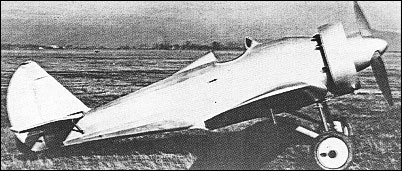|
| Although evolved in parallel with the I.A.R.15, the
I.A.R.16, which flew for the first time in 1934, was the
first of Carafoli's fighters to feature an all-metal structure,
this having plywood, fabric and duralumin skinning.
It was powered by a 560hp Bristol Mercury IVS.2
nine-cylinder radial enclosed by a Townend ring and
carried an armament of two 7.7mm Vickers guns. The
I.A.R.16 was not developed further than a single prototype,
bringing to an end Romanian fighter design for
several years.
 | A three-view drawing (1280 x 864) |
| WEIGHTS |
| Take-off weight | 1650 kg | 3638 lb |
| Empty weight | 1224 kg | 2698 lb |
| DIMENSIONS |
| Wingspan | 11.70 m | 38 ft 5 in |
| Length | 7.37 m | 24 ft 2 in |
| Height | 2.80 m | 9 ft 2 in |
| Wing area | 20.30 m2 | 218.51 sq ft |
| PERFORMANCE |
| Max. speed | 342 km/h | 213 mph |
| e, e-mail, 07.11.2025 00:26 e reply | | Laur1965, e-mail, 27.12.2015 23:39 Correction needed - Please read : "...and it established a new national altitude record..." instead of "...and it established a new world and national altitude record...". reply | | Laur1965, e-mail, 27.12.2015 22:46 On 16 July 1935, an I.A.R. 16, featuring an enclosed cockpit, piloted by Romanian Lieutenant Aviator Alexandru Papana, took off from Pipera airfield at 17.48 p.m. and it established a new world and national altitude record of 11,631 m (previous world record held by the Italian Cdr. R. Donati, who reached 14,433 m on 11 April 1934, while flying a Caproni 161), beating the previous national record of 10,518 m set up by the late Romanian Captain Aviator Romeo Popescu. reply |
|
Do you have any comments?
|
| 
COMPANY
PROFILE
All the World's Rotorcraft
|







